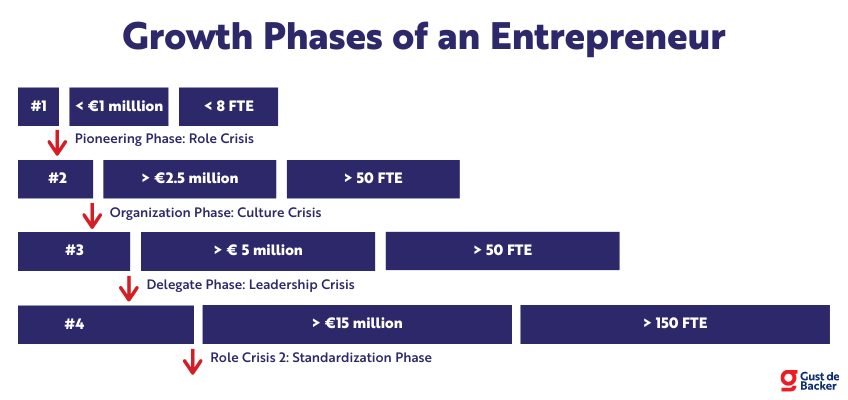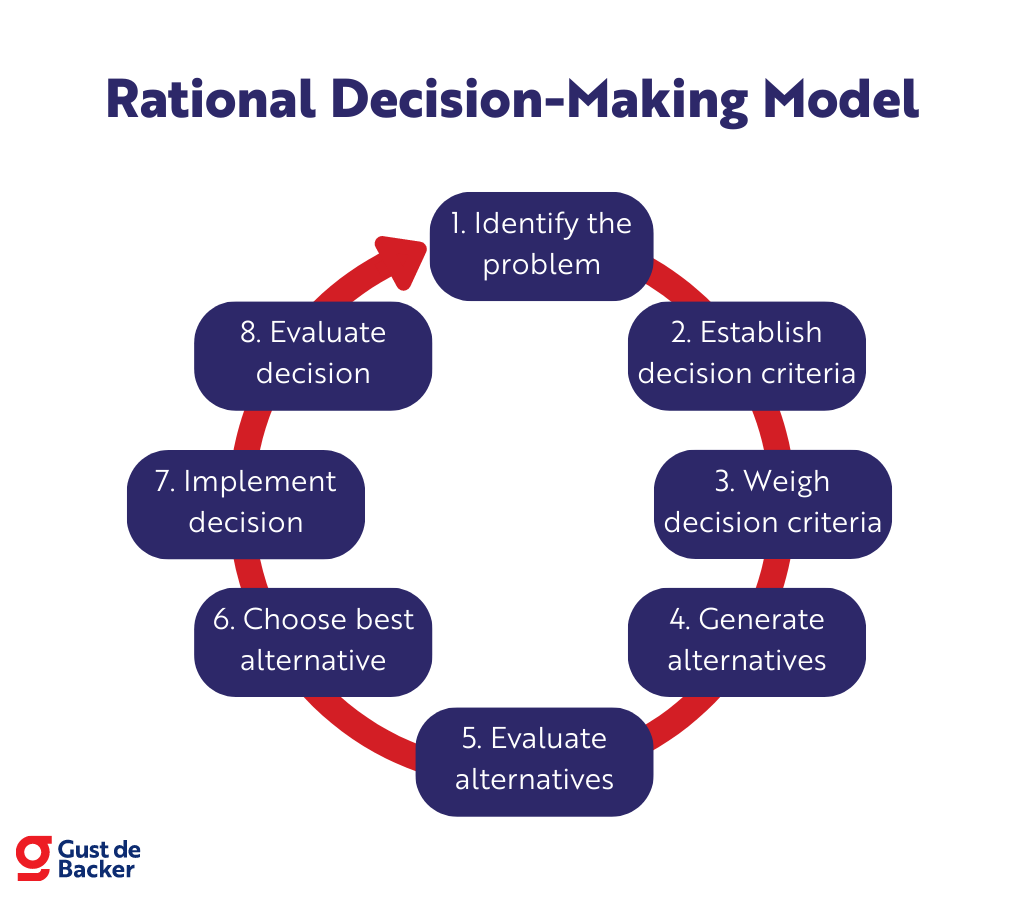Growing your business? Many entrepreneurs eventually run into a growth ceiling that they themselves find difficult to get through.
At some point then you notice that growth is stagnant or even declining and you’re ready for the next phase, but what exactly is it?
I’m going to show you:
- What growth strategies are out there for businesses.
- What you need to grow your business.
- How you can start putting this into practice.
Let’s begin.
Why grow your business?
Why you should grow your business is not that tricky; standing still is going backwards.
There are several reasons why you might want to grow your business:
- Lower costs because of economies of scale.
- Greater dominance in the marketplace.
- Greater power over suppliers.
- Risk reduction or diversification.
- Attracting more talent.
- Obtain a financially better position.
- Security for the future.
- Greater business (and personal) happiness.
The goal of a commercial enterprise is to achieve its mission and vision, resulting in profit.
Growth phases of companies
There are different stages of growth for companies, based on the Customer Development Process:

Shaping the mission, vision and strategy….
1. Idea: You start with an idea, a solution based on a problem. You start validating that idea to eventually arrive at a problem-solution fit.
2. Concept: you develop a concept of your solution so you can actually test whether you solve the problem.
Validate the product and market….
3. Committing: now you’re going to decide if you think it’s worth going after your vision and if you’re the right person to carry this vision forward. This stage results in a vision/founders fit.
4. Validating: you will create a Minimum Viable Product which you will validate in the market to test whether there is really a demand for your solution. The end result of this phase is a product-market fit.
Growing your business…
5. Scaling: you have a successful concept that the market is waiting for, now it’s time to start harvesting the seeds you planted. Herin you might pursue a channel / model fit.
6. Establishing: your company can only really become a great company if there is a business model / market fit. In other words, the market responds well to the business model you are practicing.
Which companies can grow fast?
Derived from the stock world, but companies with multibagger characteristics are capable of rapid growth:
- Company must be relatively small: a corporation like Apple or Volkswagen can hardly grow 2, 10 or 100 times its size.
- Have the wind in its sails: the company is in a growing industry that is profitable, so no cutthroat competition.
- Be capital-light: growth must not cost too much money; a software company grows faster than a hotel chain.
- Solid profits: there should be growth in absolute profits and profit margins.
- Growth in valuation ratio: it is positive if a company grows in valuation so that it is worth more years later.
- Quality management: management must be able to make the right decisions and reinvest profits.
- Strong competitive advantage: a company that does not have a competitive advantage (moat) is vulnerable.
In addition, there are some other attributes that help a company grow:
- Thoughtful mission, vision and strategy: without an end goal, it is difficult to properly navigate a company.
- Culture: a good culture raises staff productivity and inventiveness.
- Talent: putting the right people in the right places strengthens the culture and quality of work.
- Processes: to be scalable, it is important to have the right processes such as experimentation, strategic planning, goals, etc.
Not only does a company need certain attributes to grow, but entrepreneurs themselves as well.
Growth phases of entrepreneurs
There are also different phases that entrepreneurs and employees go through during the growth of a business.
If we look at the phases of an entrepreneur:

- Pioneer phase: the entrepreneur is collaborating in the business, little is formalized yet. The company is still market- and product-oriented at this point; the team is particularly concerned with strategy and positioning. The goal is the company’s right to exist.
- Organization phase: building the organization is now a secondary task of the entrepreneur. Management processes must be established and the role of the entrepreneur now changes to manager. Managing requires different skills from an entrepreneur.
- Management phase: in this phase, all kinds of managers are hired for things that the entrepreneur used to do himself. More hustle, increasing costs, higher complexity and margins under pressure.
- Delegation phase: the management team is complete, the entrepreneur must leave most decisions to his team. The entrepreneur will have to start leading instead of managing.
- Standardization phase: the phase for growth. To handle growth, the company must standardize. In other words, become scalable without becoming bureaucratic. In this phase, the entrepreneur works on the future of the company.
Which entrepreneurs can grow fast?
Tony Robbins says it beautifully….
Success is 80% psychology and 20% skills.
The qualities of a good entrepreneur:
- Creativity: put yourself in a different perspective.
- Professionalism: be positive, do what is right and be grateful for the opportunities you have.
- Risk taker: step out of your comfort zone and take calculated risks.
- Passion: have passion for what you do and transcend yourself.
- Knowledge: surround yourself with people who are better in certain areas than you are.
- Social skills: build relationships by listening and maintaining good communication.
- Decisive: be patient, stay consistent and don’t give up.
- Eager to learn: embrace change by trying new things.
- See bigger picture: seek challenge, think big and set goals.
- Patient: choose short-term pain for long-term happiness.
- Driven: work hard, have no excuses and make it happen.
- Self-knowledge: know yourself and address your strengths.
- Adaptability: dare to make mistakes by learning from them.
- Stoicism: have no expectations and give more than you take.
- Leadership skills: keep improving by thinking 2 steps ahead.
A business coach can help you with these qualities.
9 growth strategies for businesses
According to the Ansoff Matrix, you can grow your business in 4 ways:

According to the Ansoff Matrix, there are 4 ways to grow a business:
- Market penetration: you have an existing product in an existing market so you need to pursue higher market penetration and thus market share.
- Market development: bringing an existing product into a new market. For example, by offering a cheaper variant you can appeal to a different target market.
- Product development: introducing a new product into an existing market. These products can often be sold through cross-selling, for example, a web builder selling hosting to its existing customers. It is interesting to monitor trends in the market to grow your business in this way.
- Diversification: this is the growth strategy with the most risk, since you want to bring a new product into a new market.
There are several ways to grow your business under any of the previous headings….
1. Strategic decisions
First, it is important to have good management in place which makes the right strategic decisions to be able to achieve the objectives through strategic planning.
This includes asking the right questions; for example, ask yourself the following questions periodically:
If a competitor had a monopoly, how would they have handled it?
Suppose we could become 10 times cheaper, how would we do it?
We want to increase our profit margin by 10%, how can we do that?
If we grow 25% in market share within 3 years, how would we have done it?
Decision Process
Decisions should not be made based on emotion, but on rationality. To avoid making decisions for personal gain rather than for the success of the company, it is good to build in a thorough decision-making process.
There are 3 types of decisions:
- Strategic decisions: determine the direction of an organization.
- Tactical decisions: how things will be done.
- Operational decisions: decisions made every day by employees.
The Rational Decision-making Model describes the process of making rational decisions:

SFA Matrix
To determine whether an option is suitable, feasible and acceptable, Johnson and Scholes’ SFA matrix can be used:

Rational Decision-making Model:
- Identify the problem
Do a deep-dive into the problem and collect qualitative & quantitative data.
- Establish decision criteria
Establish criteria on which to evaluate the solution.
- Give decision criteria weight
Give the various decision criteria a weight in how important they are.
- Brainstorm solutions
Engage your team in brainstorming and researching solutions.
- Evaluate the solutions
Evaluate the solutions found using the decision criteria.
- Choose the best solution
Choose the solution that best matches your decision criteria and its weights.
- Implement the solution
Implement the best solution.
- Evaluate the solution
Evaluate the solution and examine whether the decision process can be tightened up.
You can also ask yourself ethical questions about a decision:
- Is this decision fair?
- Will I think better or worse of myself after making this decision?
- Is this decision going to break rules within the organization?
- Is this decision going to break the law?
- How would I feel if this decision made the news?
2. Marketing & Sales
Marketing and sales are always needed and are particularly effective for gaining a larger market share and penetrating the market.
In this, it is useful to divide the market into segments using TAM SAM SOM and have a good understanding of the decision-making unit.
3. Responding to trends
Trends are a good way to start selling a new product, this works especially well in an existing market.
Periodically do a DESTEP and/or a Porter-5-Forces analysis.
4. Merger & Acquisition
There are several reasons why you might want to acquire a company:

- Vertical: company at a different stage in the chain.
- Horizontal: company operating in the same sector.
- Conglomerate: company in another sector.
- Concentric: company in the same sector, but a different stage in the chain.
5. Product offering
Investigate whether there are logical products that can be sold alongside your main product.
For example, consider phone cases with a phone or travel insurance with a trip.
Are you going to grow your business?
The big question… Are you going to grow or shrink?
I’m curious what you think is the most effective way to grow.
Let me know in a comment.
P.S. should you want additional help, please let me know at [email protected]

![Business-Driven Marketing (BDM): 8 Steps to Drive Business Impact [+14 Templates]](https://gustdebacker.com/wp-content/uploads/2024/07/Business-Driven-Marketing-BDM.png)
![Automate ~30% of Repetitive Marketing Tasks with AI: 5 Easy Steps [+ 7 Expert Prompts]](https://gustdebacker.com/wp-content/uploads/2024/07/AI-in-Marketing.png)
![Customer Journey Map (2025): How-to & Examples [+ Template]](https://gustdebacker.com/wp-content/uploads/2023/11/Customer-Journey-Map.png)
Having the wind in the sails is so important. That’s often forgotten fact.
Definitely, having a produt/market fit is necesary to grow effectively.
Thank you for sharing these informative and insightful personal and business models Appreciated.
How do we keep in touch with you?
Ouma
Thanks Ouma! You can connect with me on LinkedIn.